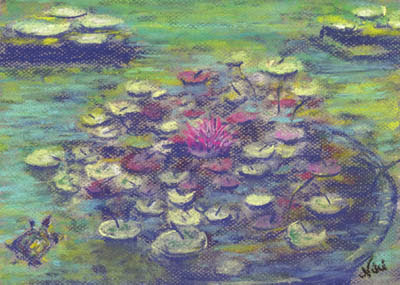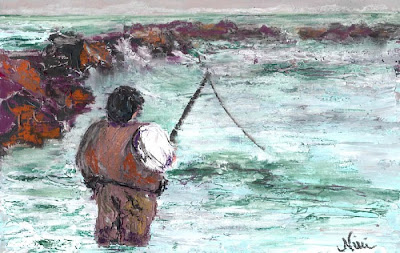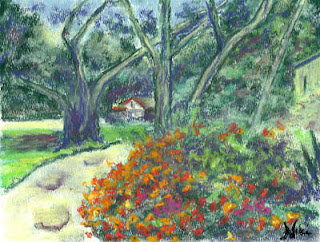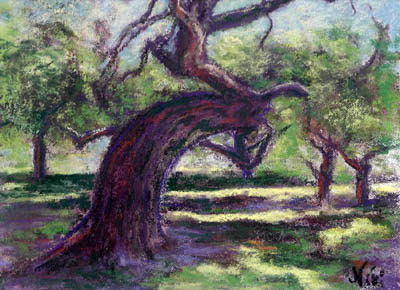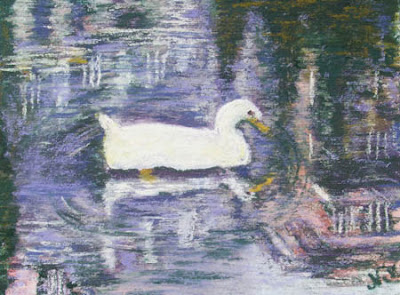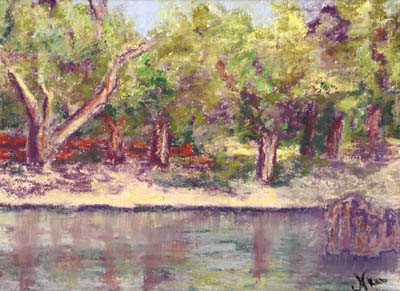Number 4 of 10 Reasons to Love Pastel: Push-Pull
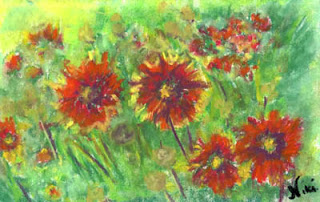
"Hippie Flowers" 6 x 9 inch pastel on drawing paper Click here to view large or see purchase details December usually isn't the best time for me-- everything seems to hit the fan mid-month, leaving me exhausted (and this time sick) by the time the holidays are over. These little flowers cheered me up as I worked on them (I called them "Hippie Flowers" because they reminded me of something from the sixties). In spite of that, I've been working for a while on a few pieces to demonstrate one of my favorite elements of painting with pastel: the delicate push-pull between the soft, blended areas and the bolder, harder lines and strokes. One of the most relaxing things I can think of to do is to smear a pastel painting. In my first pastel classes, we learned to block in areas of color and smear the painting as a whole to achieve that soft background effect unique to pastel. After a layer of fixative (if desired), we would then go back over the piece, a
